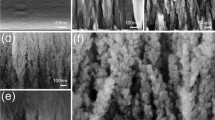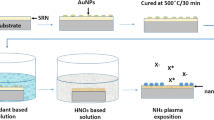Abstract.
We used laser-induced decomposition of silane for the fabrication of nanosized Si particles and studied in detail their structural characteristics by conventional and high resolution electron microscopy. The silane gas flow reactor incorporated in a molecular beam apparatus was operated without size selection to achieve a broad size distribution. Deposition at low energy on carbon substrates yielded single crystalline, spherical Si particles almost completely free of planar lattice defects. The particles, covered by thin amorphous oxide shells, are not agglomerated into larger aggregates. The lattice of diamond cubic type exhibits deviations from the bulk spacing which vary from distinct contraction to dilatation as with decreasing particle size the oxide shell thickness is reduced. This effect is discussed in terms of the strong Si/oxide interfacial interaction and compressive stresses arising upon oxidation. A negative interface stress, as determined from the size dependence of the lattice spacing, limits the curvature of the interface, i.e., at small sizes Si oxidation must be considered as a self-limiting process.
Similar content being viewed by others
Author information
Authors and Affiliations
Additional information
Received: 31 August 1998 / Received in final form: 3 December 1998
Rights and permissions
About this article
Cite this article
Hofmeister, H., Huisken, F. & Kohn, B. Lattice contraction in nanosized silicon particles produced by laser pyrolysis of silane. Eur. Phys. J. D 9, 137–140 (1999). https://doi.org/10.1007/s100530050413
Issue Date:
DOI: https://doi.org/10.1007/s100530050413




